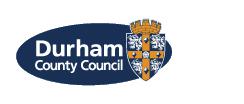Ratio and Scale Factors
There are many situations where problems can be solved with a firm understanding of ratio and scale value. This resource package contains a variety of activities designed to introduce, explore and consolidate learning in the use of ratio and scale factor notation and use methods involving conversion, mixing, measuring, scaling and comparing quantities and concentrations.
Visit the secondary mathematics webpage to access all lists.
- ALL
- Teacher guidance
- Textbook
- Information sheet
- Group work
- Activity sheet
Teacher guidance
Year Seven Fractions and Ratio Mini-pack
The unit is split into two phases. Contained in the starters section of phase one are activities which require students to review their knowledge of fractions, decimals, percentages, ratio and proportion.
The main activities ask students to use images for fractions and ratio to establish connections between operations, symbols and language in order to build on existing knowledge and develop understanding of fractions as operators; link fractions and ratio and consider equivalent expressions.
The starter activities in phase two are designed such that students practise skills of simplifying fractions and converting between fractions, decimals and percentages.
The main activities require students to explore multiplicative relationships within a small set of simple fractions and ratios and use knowledge of these particular relationships to solve simple problems by informal methods.
Textbook
Similarity
This resource covers enlargement, similar shapes, linear scale factors, area scale factors, volume scale factors, maps and scale models.
Maps and Scale Models considers scales applied to distances on maps and to sizes of scale models.
Information sheet
Calculating Colours
This practical activity provides students with an understanding of the different ways in which proportion can be expressed. Through a mixture of explanation and practical work, students explore how it is possible to give an accurate quantitative description of colours.
Students mix varying quantities of red and blue water to create a range of different shades of purple which are then described in terms of fractional and percentage composition. Through this activity students experience a functional use of ordering equivalent fractions.
Group work
Ratio and Proportion Mystery
This resource contains eleven cards, each with information on how students have performed in two papers of a mathematics test. Students are asked to decide who should get the mathematics prize by working out their rank order. It is suggested that students draw up a table to show each student's marks and percentages on each paper and their average percentage over both papers.
To solve the problem, students will need to find fractions and percentages of quantities, equivalent fractions and percentages, multiples of ratios and averages of two percentages.
Activity sheet
Ratio
This resource contains two packs of games, investigations, worksheets and practical activities.
Ratio pack one contains twelve work cards. Activities relevant to this topic are: Pencils, comparing the lengths of different pencils, Walking to school, comparing distances students live from school, Introducing ratio comparing the number of beads on bracelets.
Ratio pack two contains nine work cards. Activities relevant to this topic are: Unibond mixtures, making mixtures of chemicals and water, International paper sizes, exploring the ratios involved in paper sizes.






